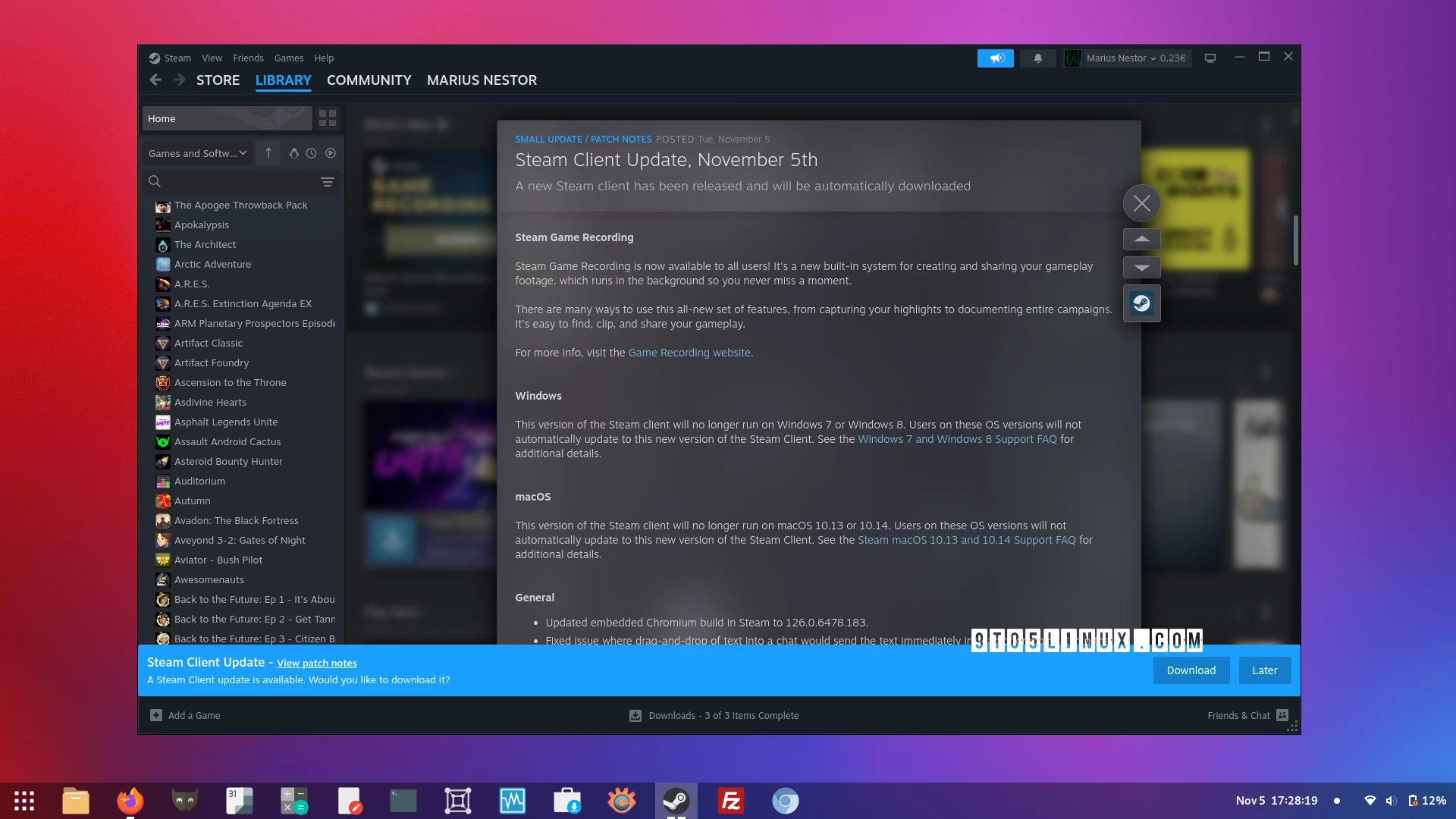Today, Valve has introduced a stable update for the Steam Client across all supported platforms, addressing several bugs while adding a new built-in game recording feature and enhancing the experience for native Linux gamers.
The standout feature in this latest update is Steam Game Recording, a built-in tool designed for capturing and sharing gameplay footage. This feature can operate in the background, automatically recording your gameplay, and can be accessed through the new Recordings & Screenshots option located in the View menu.
“There are many ways to use this all-new set of features, from capturing your highlights to documenting entire campaigns. It’s easy to find, clip, and share your gameplay,” said Valve.
The latest Steam Client introduces numerous updates for Linux users, beginning with the ability to run native Linux game titles using the Steam for Linux runtime 1.0 (scout) by default, as opposed to the older runtime environment. This improvement aims to enhance compatibility across various Linux desktop distributions.
For those who prefer the legacy system, users can disable this new feature by using the -compat-force-slr off option in the Steam client command line. Additionally, Steam developers now have the option to choose which Steam for Linux runtime their native game titles will utilize.
For Linux gamers, the latest Steam Client update enhances the detection and handling of commands sent to an active Steam client. Additionally, it introduces a -disable-screensaver-inhibit command line option to stop Steam from blocking the screen saver when there is activity.
Moreover, Steam now consistently defaults to X11 when the SDL_VIDEODRIVER/SDL_VIDERO_DRIVER environment variable is set to Wayland. The recent fixes for Steam Play have been expanded to include third-party compatibility tools. Furthermore, the user interface toggle to globally disable Steam Play has been removed, reflecting that Steam Play is permanently activated on Linux.
The new Steam Client also addresses various bugs, including a slow startup on Linux systems where the reverse hostname lookup for the loopback interface isn’t localhost. It corrects a scenario where an incorrect DPI scaling factor is applied for systems using non-GNOME sessions with an active gnome-desktop-portal service, resolves a crash issue when launching steamwebhelper, and fixes several other common crash problems.
Additional significant changes feature the reactivation of remote installs through the Steam Client via the streaming dropdown, optimized detection of other computers for streaming and peer downloading when utilizing a secondary wireless interface, support for AV1 video streaming on high-end systems for Remote Play, compatibility with wired Xbox controllers on macOS Sequoia, along with Invert X and Invert Y options in Mouse Regions.
As previously noted, the latest update to the Steam Client addresses numerous bugs, so be sure to examine the release notes for additional information. In the meantime, you can upgrade your current installations to the new Steam Client version by navigating to the Steam menu and selecting the Check for Steam Client Updates option.
Last updated 2 hours ago
